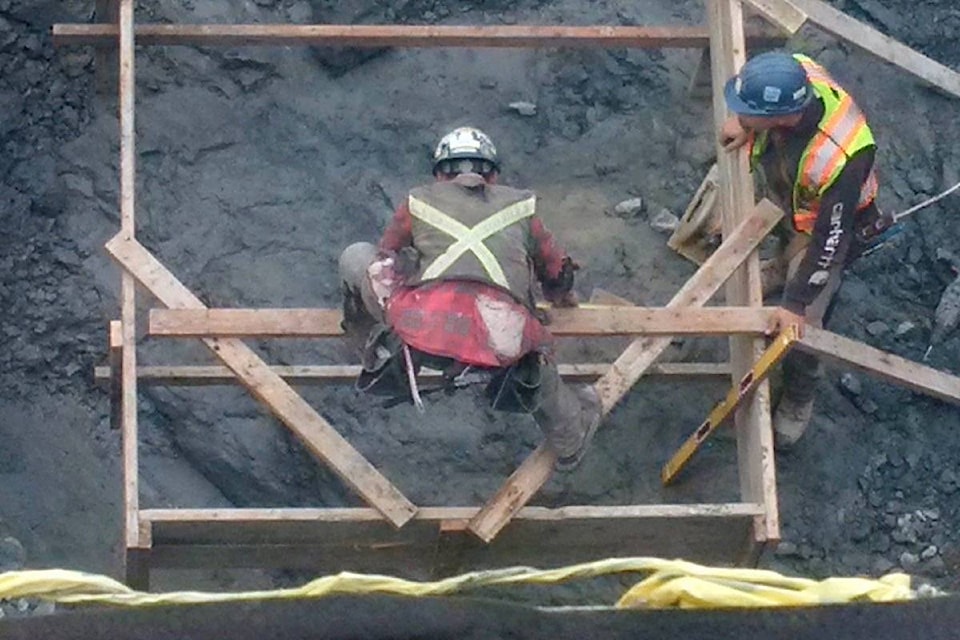Premier John Horgan has followed through on his March promise to return B.C.’s major public infrastructure projects to a “closed shop” for selected international trade unions, many of which are headquartered in the U.S.

This old-is-new policy applies first to the replacement of the Pattullo Bridge between New Westminster and Surrey, and then to widening the Trans-Canada Highway from Kamloops to the Alberta border.
This is the latest move in a labour power struggle has been raging for most of my adult life, notably with the showdown over Expo 86 construction and bringing in Hyundai Corp. to pair with a non-union contractor to build the Alex Fraser Bridge.
Christy Clark picked up the torch lit by then-premier Bill Bennett in the 1980s, pushing through the Site C project as the first B.C. Hydro dam to be built as an open-shop site. This was much to the dismay of the B.C. and Yukon Building Trades Council, a group restricted to branch offices of international unions, which signed on reluctantly to share the Site C work site with non-union companies and non-affiliated unions that it views with contempt.
Horgan has now proclaimed the return of the “project labour agreement” for public construction, in which the old-school unions agree not to strike in exchange for a monopoly on the site. (How old-school? They have names like International Brotherhood of Boilermakers, Iron Shipbuilders, Blacksmiths, Forgers and Helpers Lodge 359.)
As B.C. Building Trades executive director Tom Sigurdson explained to me, non-union companies can still bid, as long as they pay wages and benefits determined by the old-school unions. Their “non-working foremen” and a quota of their non-union tradesmen are allowed on site, but anyone who picks up a tool is required to join the designated union within 30 days.
RELATED NEWS: Non-union builders protest exclusion
Benefits will keep some non-union contractors out. They include union-controlled defined-benefit pension plans. The ones who do get in have their most skilled employees forced into the union, at least for the duration of the job.
Things have changed since I worked as a pipelayer for a non-union water and sewer contractor in northern B.C. the early 1980s. My wage of $10.50 an hour, time and a half for overtime, was decent money back then, but I looked with envy at the much higher wages and perks of my friends who got on with provincial highway jobs.
I was disturbed to learn that one way to get these privileged jobs was to locate a certain union business agent, slip him an envelope with $500 cash inside, and get “name requested” to jump over those with greater seniority waiting on the union hall list.
I’m not suggesting that this still goes on today, but this is among the risks of monopoly control of labour. This is what Bennett was battling against back then and the same unions are regaining control today.
The wage gap today is not as big. Skilled carpenters, electricians and other trades are in high demand whether they work union, non-union or run their own show, and a whole lot of them are nearing retirement age.
One of Gordon Campbell’s moves was to pry control over apprenticeships away from the big unions. He set up the Industry Training Authority to co-ordinate the school and on-the-job parts of apprenticeships.
Under Horgan’s rules, that’s quietly being revised as well. The ITA carries on, with some new board members appointed in May. Two of them come from the International Brotherhood of Electrical Workers and two more are officials of post-secondary faculty unions.
Tom Fletcher is B.C. legislature reporter and columnist for Black Press. Email: tfletcher@blackpress.ca
@tomfletcherbc
tfletcher@blackpress.ca
Like us on Facebook and follow us on Twitter.



